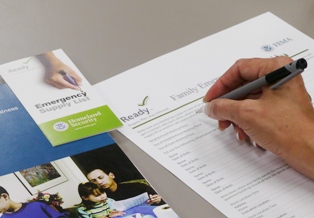The need to prepare is real

Disasters disrupt hundreds of thousands of lives every year. Each disaster has lasting effects, both to people and property.
If a disaster occurs in your community, local government and disaster-relief organizations will try to help you, but you need to be ready as well. Local responders may not be able to reach you immediately, or they may need to focus their efforts elsewhere.
You should know how to respond to severe weather or any kind of disaster that could occur in your area - tornadoes, flooding, blizzards, wind or fire, hazardous accidents or even terrorism.
You should also be ready to be self-sufficient for at least three days. This may mean providing for your own shelter, first aid, food, water, and sanitation.
There are real benefits to being prepared.
Being prepared can reduce fear, anxiety, and losses that accompany disasters. Communities, families, and individuals should know what to do in the event of a fire and where to seek shelter during a tornado. They should be ready to evacuate their homes and take refuge in public shelters and know how to care for their basic medical needs.
People also can reduce the impact of disasters (flood proofing, elevating a home or moving a home out of harm’s way, and securing items that could shake loose in an earthquake) and sometimes avoid the danger completely.
Make a kit. Make a plan. Be informed. Get involved.

